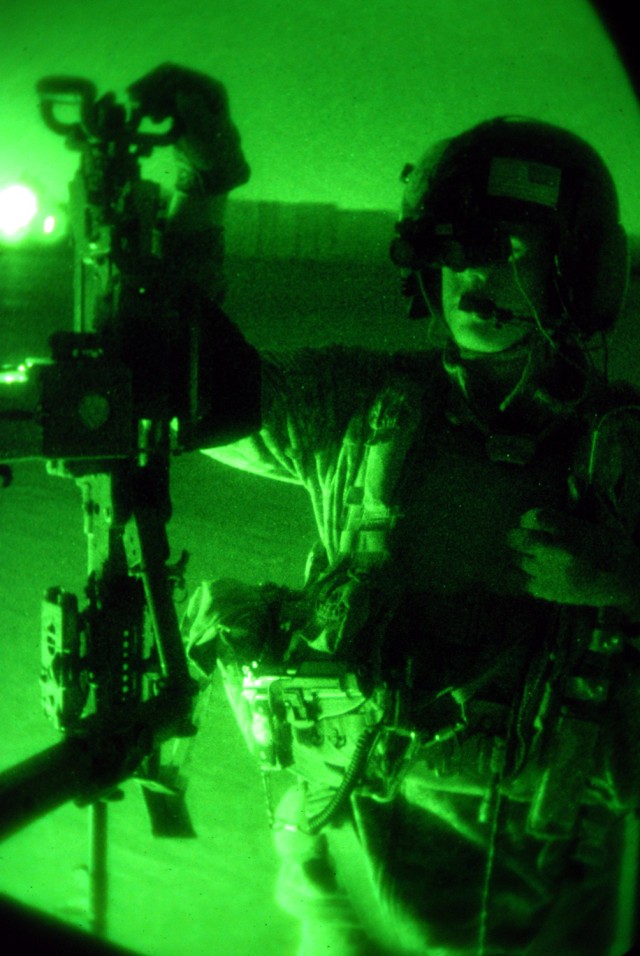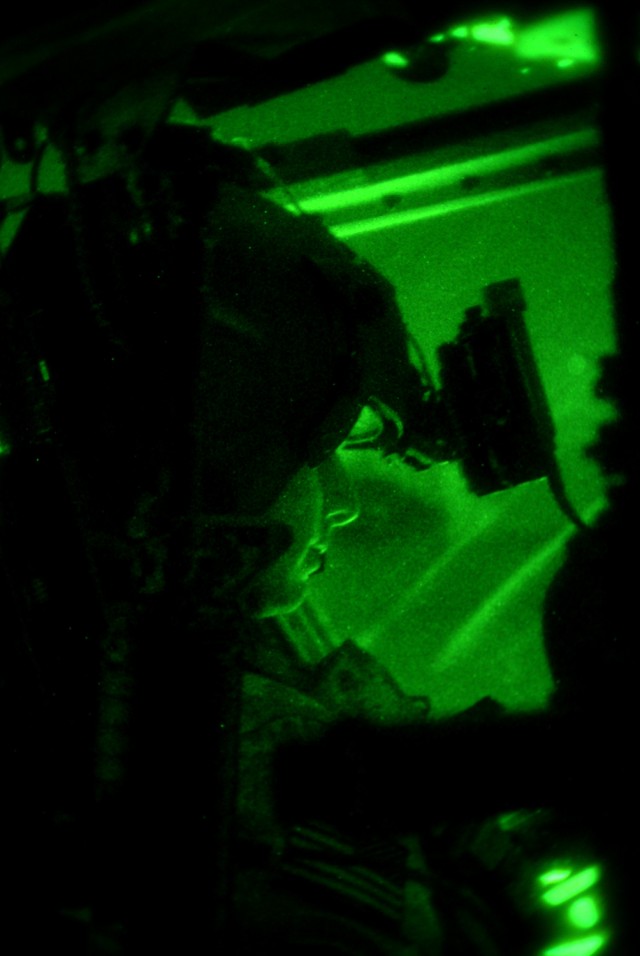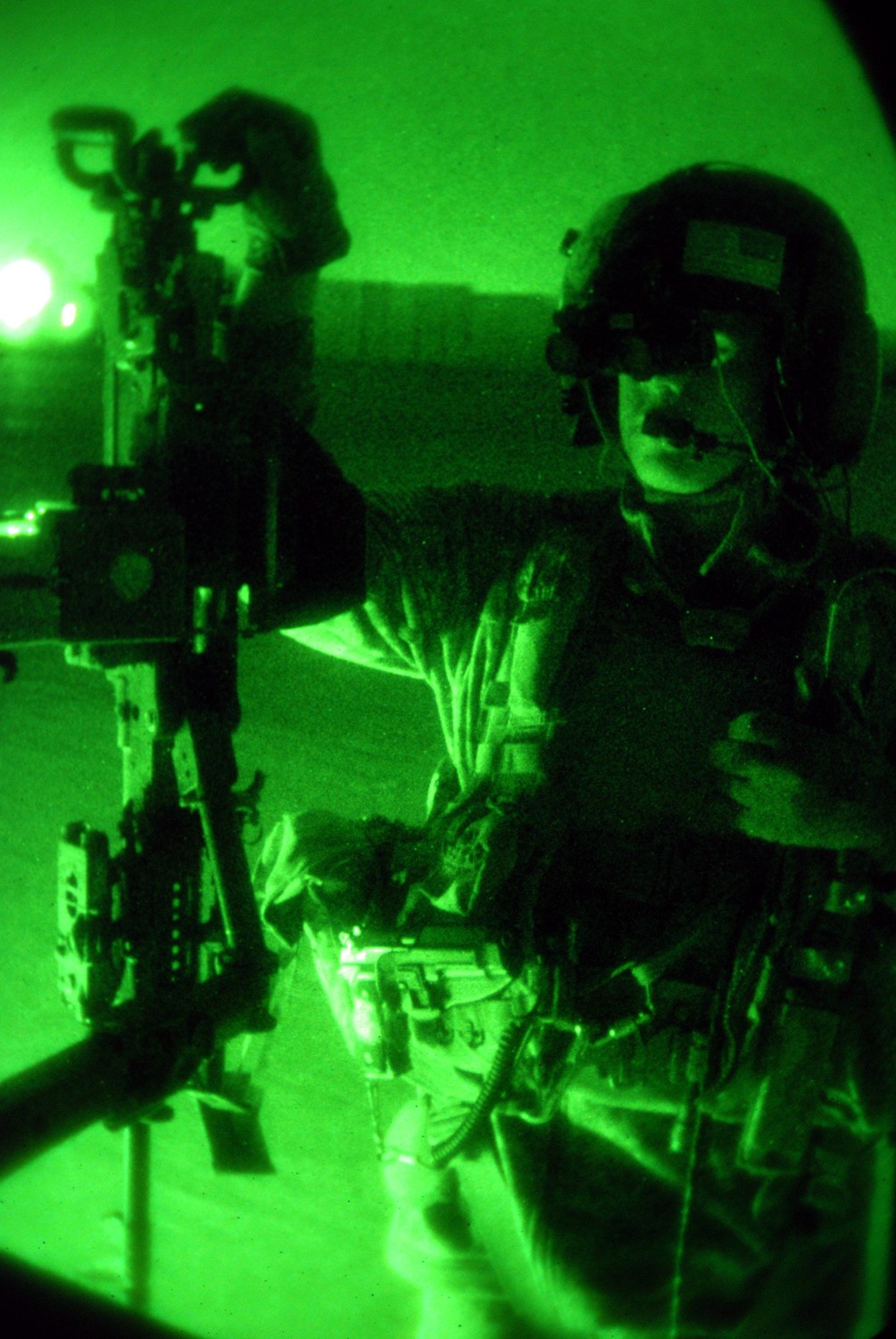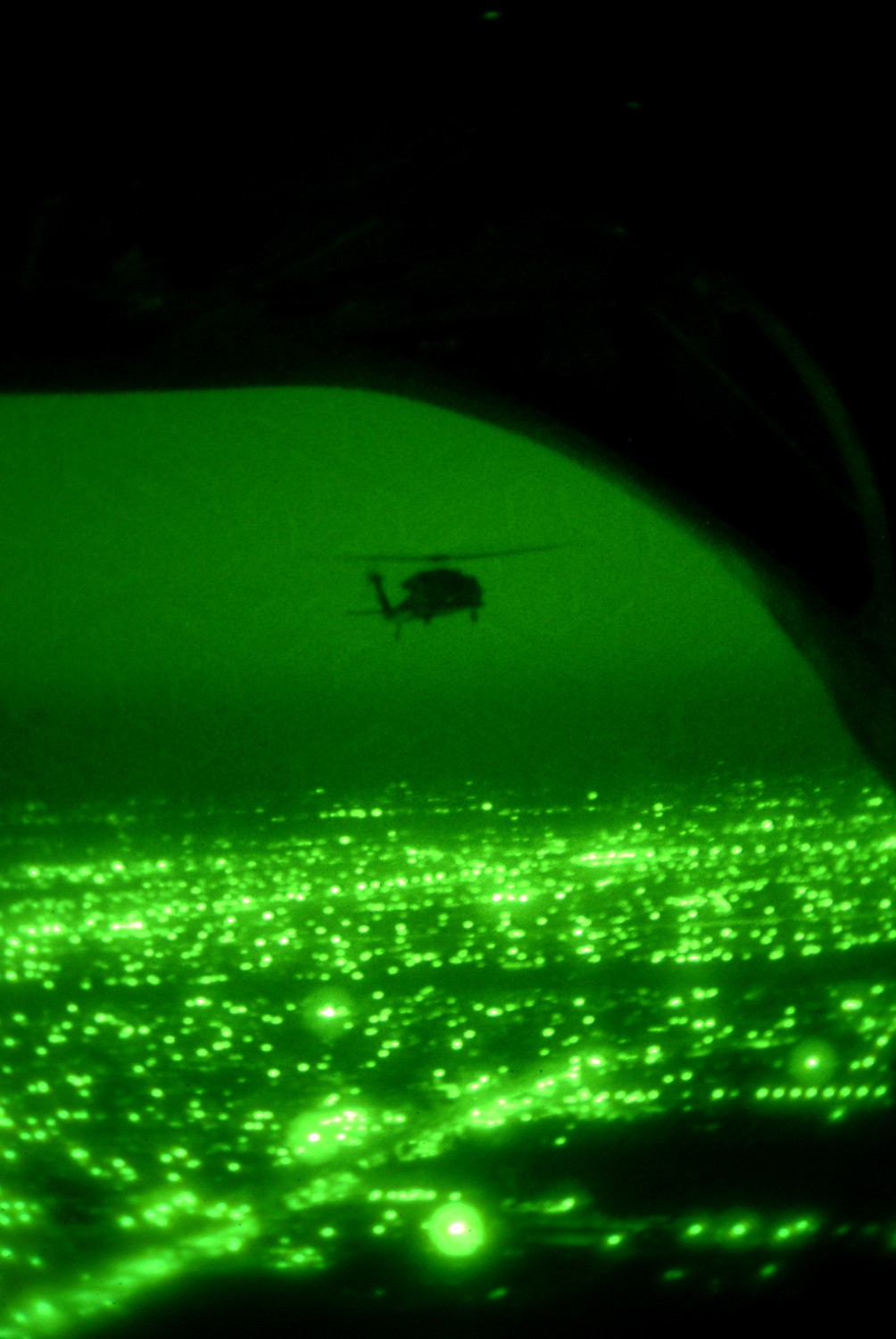CAMP TAJI, Iraq (Dec. 16, 2010) -- It was dark over Camp Taji, Iraq, by the time a pair of Army Black Hawk helicopters took off. It's better to fly that way, said one of the pilots. Even in Operation New Dawn, the Army's helicopters and their crews still face some danger from below.
But while these aviators still welcome the cover of darkness, they now see a light at the end of a seven-year tunnel here. Every mission they fly brings their involvement in Iraq closer to an end.
With the combat mission complete, fewer troops to fly, and Iraqi army helicopters active throughout the country, these crews are flying what are likely their last missions in Iraq.
The crews on Camp Taji are assigned to the 3rd Assault Helicopter Battalion, 1st Aviation Regiment, a Black Hawk helicopter unit. The battalion deployed in March from Fort Riley, Kan.
Most of the crews have previously deployed to Iraq or Afghanistan, and some of them said it hardly seems like the same place. Like most U.S. forces in Iraq, the battalion is no longer conducting a full-on combat mission. Instead, the unit is conducting what is known as stability operations. Their days of air assaults are numbered, and the crews are mostly occupied with moving troops and equipment between bases.
"We're not landing as much in the middle of Iraq," said Chief Warrant Officer 2 Pete Klein. "It's nice being able to bring people home instead of going out to raid a village."
Klein, 29, of Escondido, Calif., is serving his second tour to Iraq with the unit. While the mission has changed since his last tour, it is the same in some regards, he said.
"We're the guys that'll go in and do anything," said Klein. "On both types of mission, we're carrying people in the back, and everybody needs to come home."
Spc. Terren Blake, a crew chief assigned to the battalion, notices the differences from the back of the aircraft.
"The air assaults were a rush, but I like this mission too," said Blake, 23, of New Caney, Texas.
Blake was awarded the Air Medal on his last tour with the unit for his actions in combat. During a daytime air assault, Blake's aircraft was called back to help the troops they had just put on the ground. From both sides of the Black Hawk, Blake and another crew chief took turns firing their weapons at enemy troops on the ground. It was his first mission.
Now, Blake said that while anything is possible in Iraq, he can't imagine something similar happening on this deployment.
"It's a nice change of pace knowing that we have a new mission now," he said.
The battalion is not completely done with air assaults, but even the ones it still conducts have changed. Instead of bringing U.S. troops into harm's way, the crews now find themselves inserting platoons of Iraqi army soldiers. In preparation for the December 2011 deadline for all U.S. troops to leave the country, the Iraqi troops are on their way to completely taking over the air assault mission.
Spc. Trey Ross notices that change from his last deployment with the battalion in 2007.
"Our air assaults last tour were about 90 percent American and 10 percent Iraqi, and it's probably completely flipped this tour," said Ross, 26, of Early, Texas.
What the crew chiefs are lacking in action, they are making up with heavy lifting. Their brigade has moved over 200,000 passengers, 7 million pounds of cargo, and flown around 95,000 hours since March.
The battalion is part of the Enhanced Combat Aviation Brigade, 1st Infantry Division. The brigade is the Army's only aviation brigade serving in Iraq, and has absorbed additional aviation units to become a super-brigade of sorts. The battalion's crews are helping the brigade fill the shoes of four brigades, the number of aviation brigades that used to support the mission in Iraq.
On all fronts of their mission, though, the battalion's crews notice one thing in common: it's almost time to go.
"Last tour the missions never slowed down," said Ross. "This time around we've steadily seen a decline in the number of passengers we move."
Like many crew chiefs, Spc. Jacob Loomis, 24, of Livonia, Mich., almost misses what he called the "air assault days." But he also realizes that Iraq has changed since his last tour here.
"The need isn't there for us to do air assaults anymore," said Loomis. "It feels like these guys are ready to take the reins."








Social Sharing